Athens Ancient Sites



A walk will allow you to admire many important ancient sites in Athens, dating back to Classical antiquity and Roman times.
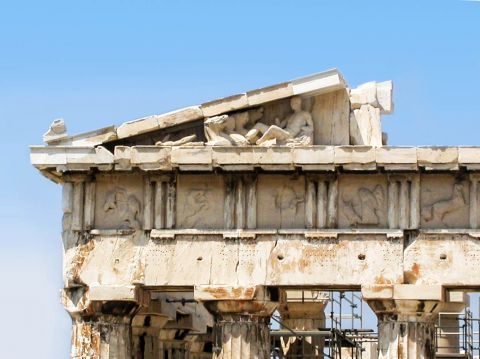
The Acropolis
The Acropolis, also called the Sacred Rock, is the most important ancient heritage of the country. It is also the trademark and most famous site of Greece. It has been the main attraction of Athens since the 5th century BC and is dedicated to Athena, the Olympian goddess of wisdom and protector of the city. The Parthenon, the most famous ancient Greek temple ever, stands proudly over the modern megalopolis, serving as a recollection of the great civilization and development the city has undergone. The Acropolis is conspicuous in almost every neighborhood of Athens. It was and still is, without any doubt, the ultimate achievement of the city's architectural glory.
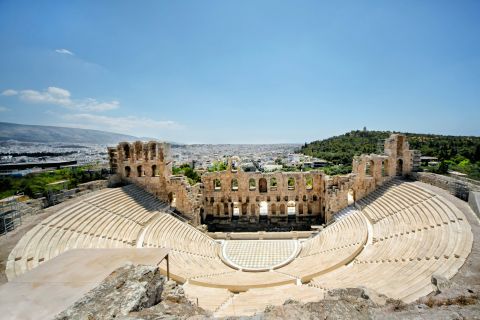
Theatre of Herodes Atticus
The Odeon of Herodes Atticus is one of the most impressive monuments of Athens and it is today hosting the Athens Epidaurus Festival with performances of theatre, music, and dance. The theatre is open to visitors only during performances. It is located on the south slope of the Acropolis and opened in 161 AD during Roman rule. The theatre was built by Herodes Atticus, a wealthy Roman, in memory of his wife Regilla. It has exceptional acoustic capacity and can host up to 5,000 spectators. It has a 28-meter-high and 2,4-meter-wide facade.

Private Tours to Ancient Sites in a Luxury Minivan
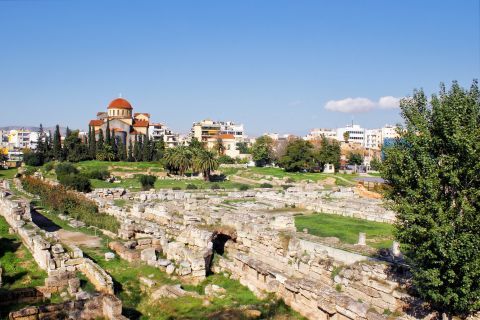
Ancient Cemetery of Kerameikos
Despite its central location, this site is one of the greenest places in Athens. Kerameikos was the cemetery of Athens from the 12th century BC to the Roman Times. One can also visit the museum which houses steles, sculptures, vases, and figurines found on the site.
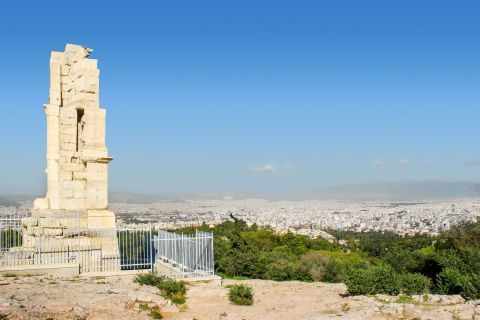
Filopappou Hill
The Hill of the Muses, located southwest of the imposing Acropolis, is popularly referred to as Filopappou Hill. From this place, one can bask in the uninterrupted views of the Acropolis and the majestic Parthenon.
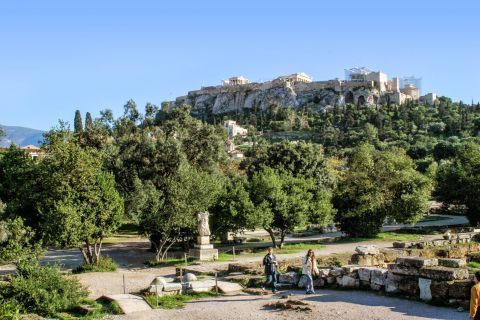
Ancient Agora
The Ancient Agora was the commercial, trading, administrative and social center of Athens. During the classical era, many admirable men like Socrates, Sophocles and Aristotle used to spend their time there and express thoughts and ideas. It is said that Saint Paul was present in the Agora in 49 AD. The most important sights in the Ancient Agora are the Stoa of Attalos and the Temple of Hephaestus.
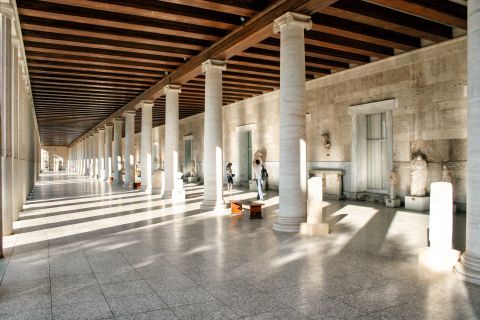
Stoa of Attalos
The Museum of Ancient Agora is housed in the replica of the Stoa of Attalos. Findings from the area are displayed as well as an interesting reproduction of the Agora in Antiquity. The original Stoa was built by King Attalos II in 159 BC and used to be the shelter of expensive shops for wealthy Athenian customers.
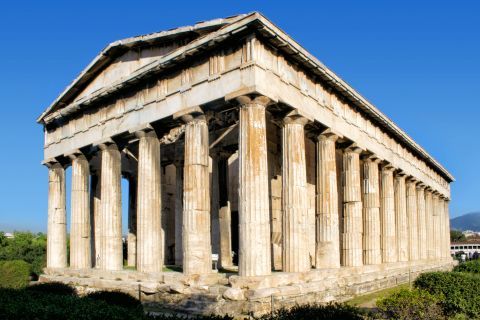
Temple of Hephaestus
The Temple of Hephaestus is the best-preserved Doric temple in Greece. It was dedicated to Hephaestus, the god of the forge, hence the reason why the temple used to be in the center of numerous metalwork shops and foundries. It was built during Pericles' rebuilding program.
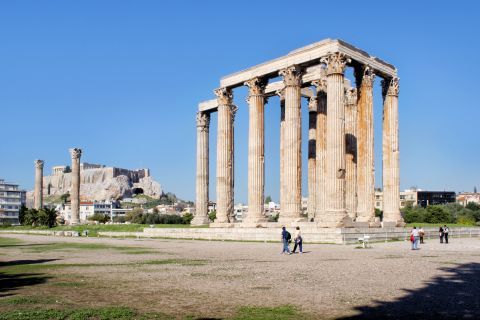
Temple of Olympian Zeus
The Temple of Olympian Zeus took 700 years of construction to complete. The work was completed by Emperor Hadrian in 131 AD. The huge temple is composed of 104 Corinthian columns with a height of 17 meters each. Very little is left of his greatness today since only 17 columns are still standing.
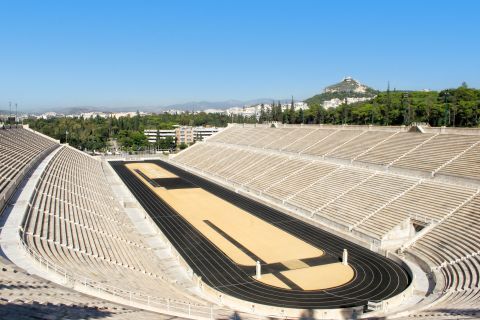
Panathenaic Stadium
The Panathenaic (or Kallimarmaro) Stadium was built in the 4th century BC. It used to host the Panathenaic Athletic contests. Herodes Atticus inaugurated the stadium when he rebuilt the seats with Pentelic marble. The stadium was abandoned for centuries but was restored in order to welcome the first modern Olympic Games (1896 Summer Olympics).
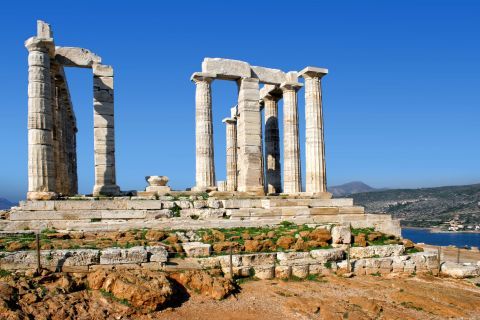
Temple of Poseidon
The Temple of Poseidon in Cape Sounion, the southernmost spot of Attica, was built in the 5th century BC and a part of it has survived until today. This is one of the most famous ancient sites in Athens and many consider it the most romantic spot in Attica.

Roman Agora
The Roman Agora is located in Monastiraki and used to be a shopping place (agora is the Greek word for market). The Tower of Winds, an octagonal structure made of Pentelic marble, is the most renowned monument of the Agora. It was built during the 1st century by astronomer Andronicus and was used as a sundial, a weather vane, a water clock, and even a compass. Its relief decoration represents the god of winds, Aeolus, hence the name of the tower.
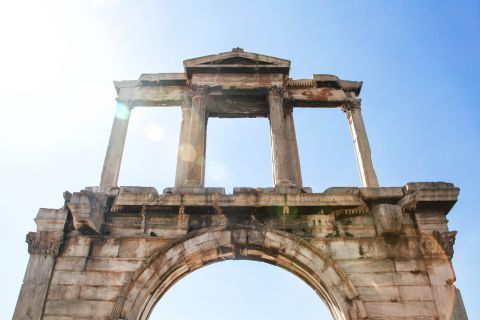
Arch of Hadrian
The Arch of Hadrian was built by Emperor Hadrian in 132 AD in order to mark the limit between Ancient Athens and the new city. It is located at the end of Amalias Avenue.
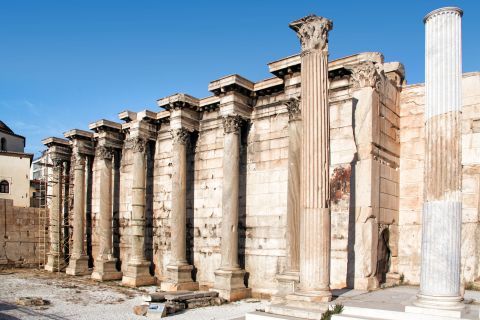
Library of Hadrian
The Library of Hadrian is located in the north of Roman Agora. In ancient times, it housed books, music and lecture rooms.
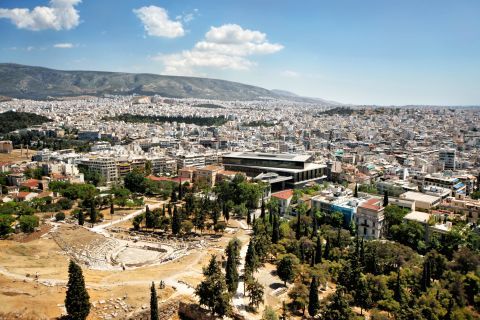
Theatre of Dionysus
The Theatre of Dionysus is the oldest theatre in Athens. It is located on the southeastern slope of the Acropolis. There once used to be an older theatre from the 6th century BC, located at the same place that had welcomed the Great Dionysia Festival. The festival was of great cultural importance and welcomed great playwrights such as Sophocles and Euripides. The theatre was later renovated with marble and gained a capacity of 17,000 seats. Unfortunately, not much is left for guests to admire today.
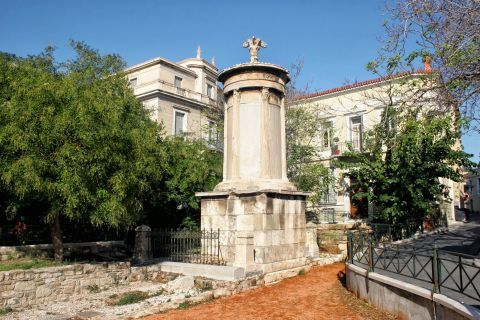
Monument of Lysicrates
The Monument of Lysicrates is located on Lysicrates Square in Plaka. It was erected by the choregos (sponsor) Lysicrates to commemorate the first prize in one of the performances he had sponsored.



